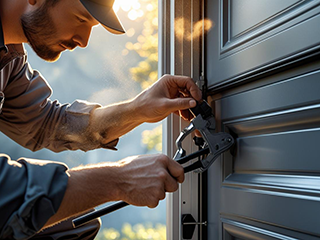
Automatic garage doors are the largest moving systems in most homes, and their proper adjustment is crucial for both safety and performance. From spring tension to opener settings and track alignment, making the right adjustments can prevent accidents, extend your door’s lifespan, and ensure smooth daily operation.
Why Accurate Garage Door Adjustments Matter
Garage door adjustments are necessary during installation, after hardware upgrades, or when you notice operational issues. The most common adjustments involve:
- Spring Tension: Ensures the door opens and closes smoothly without straining the opener or slamming shut.
- Opener Travel Limits and Force: Controls how far the door travels and how much force it uses, preventing damage and ensuring safety.
- Track Alignment: Keeps the door moving evenly and quietly, reducing wear and tear on all components.
Neglecting these adjustments can lead to safety hazards, such as doors that won’t close completely, reverse unexpectedly, or fall suddenly—posing risks to people, pets, and property.
Key Garage Door Adjustments Explained
1. Adjusting Spring Tension
Garage door springs (torsion or extension) carry most of the door’s weight. If the tension is too high, the door may not stay down; if too low, it might slam shut or strain the opener. Adjustments should be made in small increments and always with the door closed and opener disconnected. Use proper tools and safety gear, and never attempt major spring adjustments without experience—springs are under high tension and can be dangerous.
2. Setting Opener Travel Limits and Force
Garage door openers have adjustable settings that control how far the door travels up and down, as well as the force applied. If your door doesn’t open or close fully, or reverses unexpectedly, these settings likely need fine-tuning. Most openers have adjustment screws or dials on the motor unit. Always consult your opener’s manual for precise instructions and test the safety reversal mechanism after making changes.
3. Aligning Tracks and Hardware
Properly aligned tracks are essential for smooth, quiet operation. Misaligned tracks can cause the door to rub, stick, or go off-balance. Inspect tracks for debris, rust, or loose hardware, and use a level to ensure both vertical and horizontal alignment. Tighten all bolts and test the door’s movement after adjustments.
Safety Tips for Garage Door Adjustments
- Always wear protective gloves and eyewear.
- Secure the door in the closed position before starting any work.
- Disconnect the opener to prevent accidental activation.
- Never adjust torsion springs without proper tools and training—call a professional if unsure.
- Test the safety reversal system monthly by placing a 2x4 under the door; it should reverse upon contact.
Additional Useful Tips
- Lubricate moving parts regularly to reduce friction and noise.
- Inspect cables, rollers, and hinges for wear and replace as needed.
- Keep sensors clean and aligned for reliable auto-reverse function.
- Schedule professional maintenance annually to catch issues early and ensure optimal performance.
Need Professional Garage Door Adjustment?
While some minor adjustments can be handled by handy homeowners, many garage door repairs—especially spring and opener adjustments—are best left to experienced professionals for safety and reliability. If your garage door is noisy, unbalanced, or not operating smoothly, contact Garage Door Repair Shakopee for expert service and peace of mind.
Contact us today for a free inspection or to schedule your garage door adjustment. Keep your home safe and your garage door running at its best!

